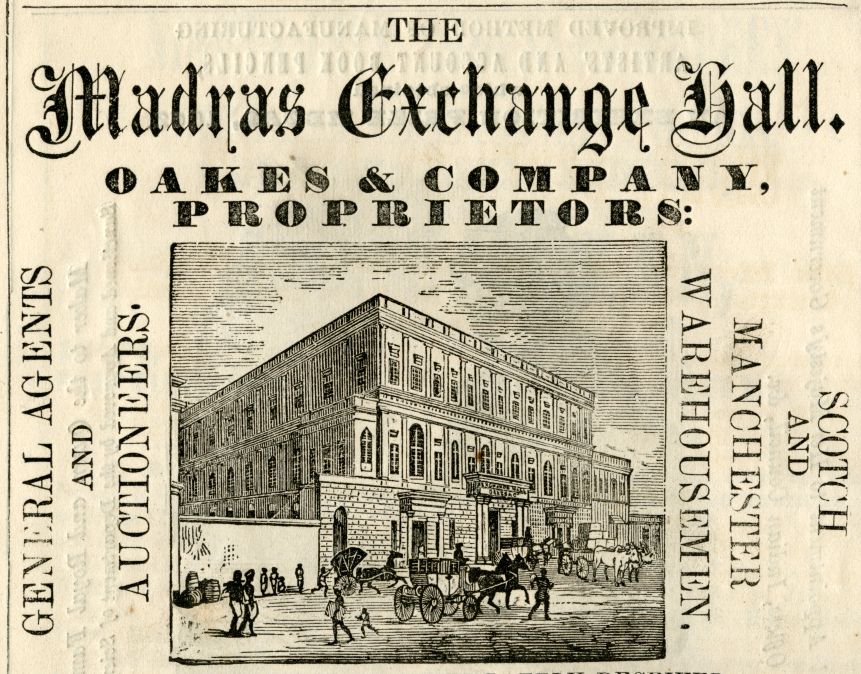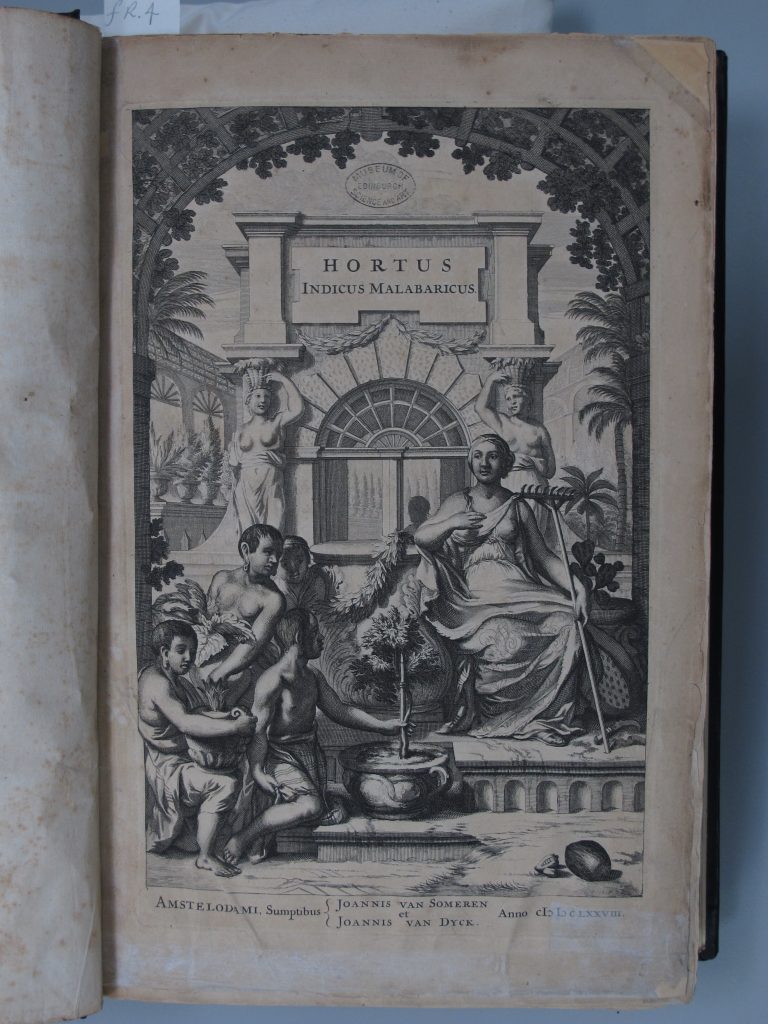Behind many of the books in the RBGE library lie interesting stories or provenances. One that has come to light during research for a new biography of the Indian forester Hugh Cleghorn concerns our set of the first six volumes of Hortus Malabaricus. One of the great classics of early tropical botany, lavishly illustrated with double-page engravings and published in 12 folio volumes in Amsterdam between 1678 and 1693, this was the work of Hendrik van Rheede, who assembled the materials at Cochin on the western, Malabar Coast of India, while working for the Dutch East India Company (VOC). The work was achieved by means of a team of Ayurvedic doctors, tree-climbing plant collectors, translators and artists.
In 1851, while on leave in Scotland, and shortly after reading his important paper on tropical deforestation to the British Association, Cleghorn was given these six volumes by his friend Robert Kaye Greville, a distinguished botanist and anti-slavery campaigner. Cleghorn took the books back with him to Madras, where he lived temporarily on the upper floor of a grand building called Exchange Hall, the premises of the merchants Oakes, Partridge & Co. At 3 a.m. of the morning of 16 October 1852 he was woken by the whining of his small dog, to find the whole building ablaze. Cleghorn escaped, but, truly the man of science, he chose to take with him his precious volumes of Hortus Malabaricus and the notes he had made on various herbaria while in Britain: the poor dog was cremated.


